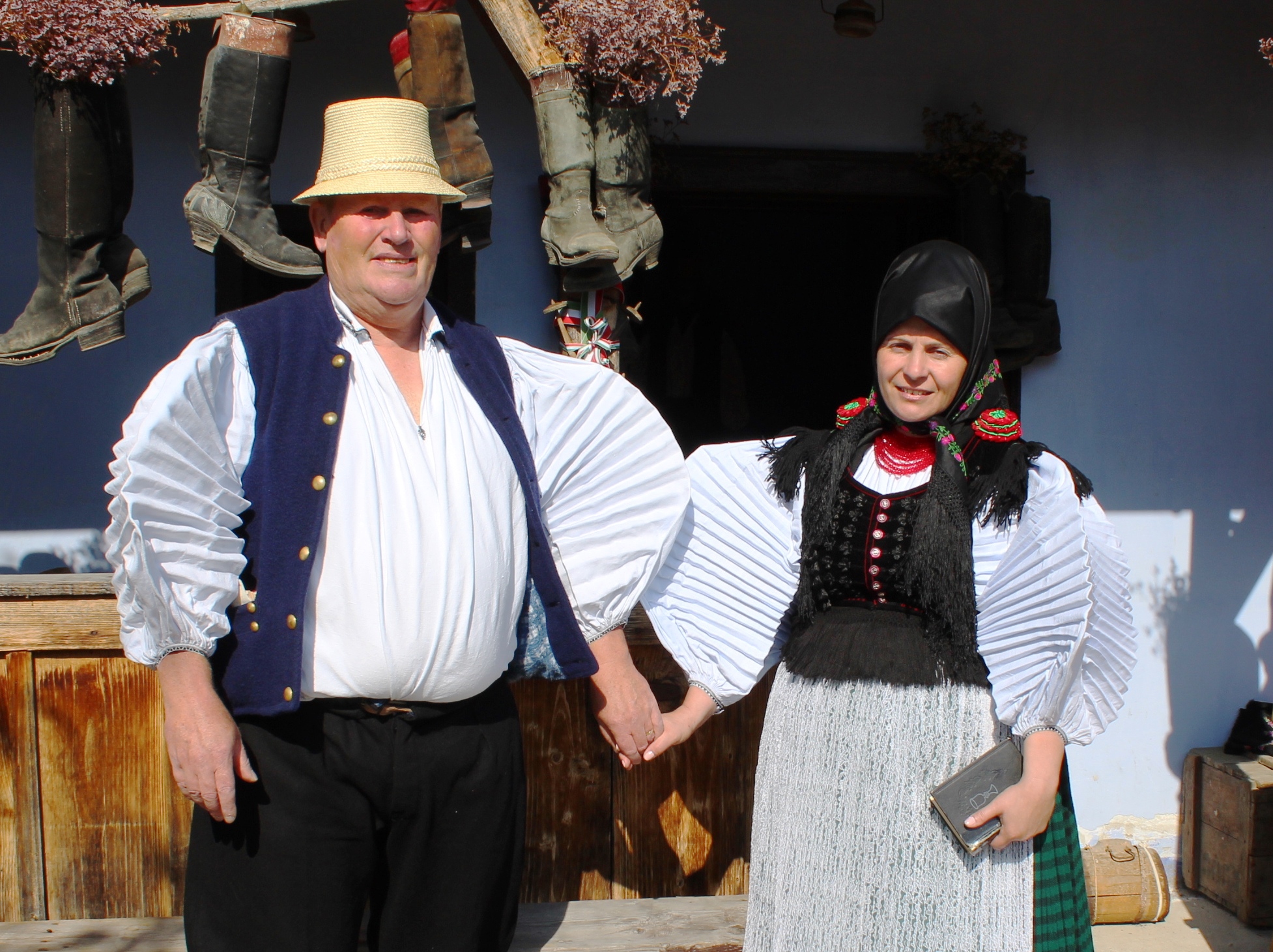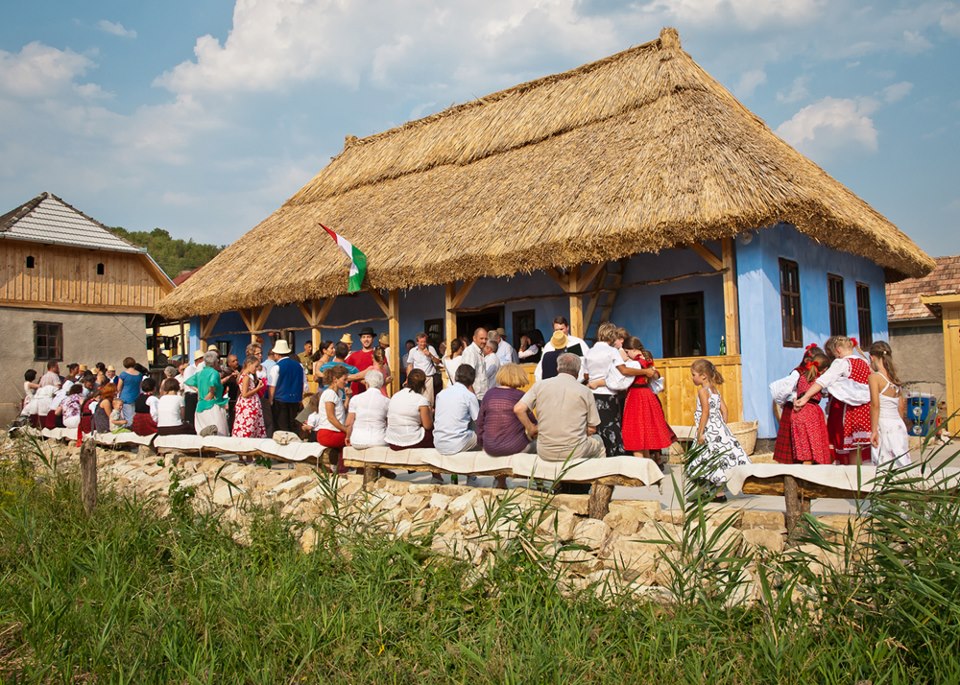A Dutchman without any Hungarian roots whatsoever, fell in love with Hungarian folk dance so deeply, that besides learning the language he even moved to Transylvania at the age of 52 to a small Hungarian village, near Kolozsvár (Cluj-Napoca) where he also revives the local dance house culture. Michel van Langeveld a.k.a.”Holland Mihály” (Mihály the Dutch) is that man .
TransilvaniaNOW: How did your love affair with Hungarian folk music and folk dance begin?
Michel van Langeveld: I was a member of a folk dance group in Tilburg, Netherlands in my twenties. We had regular performances both in the Netherlands and abroad, and we learned dances from the Balkans, Turkey, Israel, Holland, England, the U.S. even from Mexico, but we basically missed completely the Hungarian dances.
Then in 1984 in a second-hand bookshop in Amsterdam I found an album with black and white pictures. It was the first album of Péter Korniss (published in 1975), the Heaven’s Bridegroom, which included some pictures of the dance houses of Szék (Romanian: Sic) as well. I bought this book and I looked at the pictures every day. I liked them so much that two weeks later I traveled back to Amsterdam (150 km) to buy the remaining 14-15 copies of the album. Later I gave away these to my friends as birthday presents.

Mihály with his wife Erzsike in traditional costume
TN: When did you first experience the Hungarian folk dance in reality?
M N: I first visited Hungary in 1987 when we went to Mohács with my dance group. From then on I visited the dance houses of Budapest (FMH, MOM, Marzibányi tér etc.) frequently, and when the Romanian border opened in 1990, I went to Szék, the cradle of the Hungarian dance house movement as well. After our long journey from Hungary when we arrived we stopped by a house in the First Street, (Felszeg) and were immediately invited to drink some”‘water”. I got a little glass of water, than another one. Then a good bone soup and a little glass of water again. I didn’t know, but of course it was not water, but the famous Széki szilva pálinka (plum brandy). After four glasses of that strong water I was so drunk that I could barely stand, so the locals took me to a house in the center. When I woke up the next morning I didn’t know where I was. Then I opened the window, and I still remember clearly what I saw. I only saw people walking in traditional costumes, cattle- and horse-drawn wagons, and in the distance I heard a blacksmith doing his job. It was like Alice in Wonderland. Like a fairy tale. That morning I was reborn in Szék and it was the beginning of a new chapter of my life. From then on I kept coming back to Transylvania every year. I visited different folk dance camps, all over Transylvania. But among other places I always came back to Szék for at least a couple of days.
Dance house camp for children at Szék
It went like that for the next 14 years until in 2004 I decided to buy an old, blue house there. Only after I bought it did I find out that this was the famous former dance house of Csipkeszeg, in the Second Street. Many of the photos I’ve seen 20 years before in the Amsterdam second-hand bookshop had been taken in this very building. I just couldn’t believe how lucky I was. I restored the house and started to organize dance houses when I was there during vacations. From then on I had spent more time in Szék, four to five weeks a year.
In 2008 I built a new, dual-function house in the same yard. It was to be a weekend retreat for me and a brand new dance house for everybody. Meanwhile, I turned the old blue house into a dance house museum. Then in 2011, after my mother died, I decided to move to Szék for good. It was the most logical step for me, because I didn’t have many relatives left in the Netherlands since my father also died a few years before.
TN: After your relocation to Szék, you also got married soon. How did you meet your wife?
M N: I bought my bread every day in a shop placed in an old house with a thatched roof because I knew that it used to be the Forrószegi Dance House, which had such a great effect on the young Péter Korniss in 1967 when he first stepped inside that he decided to dedicate his life to immortalize the disappearing folk culture of Transylvania (and later the whole Carpathian Basin). After a while I didn’t only go there to buy the bread, but also to meet with the nice Hungarian lady who was selling it. We always had long conversations and after I while I felt in love with her. In 2012 we got married and in the same year we opened together the Csipkeszegi Bed & Breakfast in the new house I built before, and where we welcome tourists since then.

Opening ceremony of the rebuilt Forrószegi dance house and the photo exhibition of Péter Korniss
TN: What happened then with the grocery store, or former Forrószegi dance house?
M N: A young couple bought it, and wanted to demolish it to build a new, modern house in its place. When I heard about this, my first reaction was to buy it back from them, but their plans were already in a stage where this was no longer possible. After four sleepless nights the solution came to my mind. If I can’t buy the house in one piece, I will buy it piecemeal. Fortunately they liked the idea as well. So I agreed with them to buy all the wooden beams, windows, doors and all other wooden materials for a symbolic sum of 1,000 RON ($244). When I had everything, we started to rebuild the old Forrószegi dance house in Csipkeszeg. So the second famous “táncház” of Szék of the original three was also saved. And the icing on the cake was that meanwhile (in Nov. 2011) the UNESCO decided to put the Hungarian dance house movement on their immaterial world heritage list. What a year!
The opening ceremony of the rebuilt Forrószegi dance house took place the following summer, when – among others – Péter Korniss was also present and opened his own permanent exhibition. Because the reborn Forrószegi “táncház” now turned into a small museum, where visitors can view those black and white pictures which were taken by Korniss in the three dance houses of Szék in the late 60’s, which photos changed my life forever in 1984 in an Amsterdam second-hand bookstore.